|
Notes: There were several proposals to build branch lines in
the Weald of Kent all promoted by local groups rather than the
South Eastern Railway who preferred to step in at a later stage
to rescue the ailing companies once the money ran out. Most of
the early proposals quickly ran out of steam but in 1864, the
Weald of Kent Railway obtained powers to build a line from Paddock
Wood to Hythe running through Cranbrook and Tenterden. Although
this railway failed to materialise the Cranbrook & Paddock
Wood Railway was incorporated in 1877 to build the northern section
of the Weald of Kent line between Paddock Wood and Cranbrook.
The line was to be built with local money but the South Eastern
Railway agreed to contribute towards the venture once construction
had started
Construction started in 1879 but the money quickly ran out and
the South Eastern Railway appeared to have lost interest. Despite
this, a second Act was obtained in 1882 for a 1.5 mile extension
from Cranbrook to Hawkhurst and eventually the South Eastern Railway
agreed to support the line in order to prevent their arch-rival,
the London, Chatham & Dover Railway, from gaining a foothold
in what they regarded as their territory.
Further delays meant that it was twelve years before the line
was ready for passengers, the first section, from Paddock Wood
to Hope Mill for Goudhurst opening on 1 October
1892. Nearly a year passed before the final part of the line came
into service, the extension to Hawkhurst via Cranbrook opening
on 4 September 1893; on the same date Hope Mill was renamed Goudhurst.
Holman Stephens, later known as Colonel
Stephens, was the resident engineer during construction. The
line was single throughout, with passing loops provided at all
three intermediate stations, though only Goudhurst had two platforms.
A short bay platform was provided at Hawkhurst. The Sentinell-Cammell
steam railbus originally used on the Brighton-Devils Dyke branch
put in a brief appearance in 1936 but was not a success. Goods
traffic was mainly fruit and hops outwards and coal inwards. One
mainstay was the transport of a million potted plants a year on
behalf of F. W. Woolworth to branches all over the country.
From the outset all train services were operated by the South
Eastern Railway, though the Cranbrook and Paddock Wood Railway
was not officially absorbed until 1900. The SER and the LCDR combined
in 1899 under agreement that both companies would retain their
independence while being administered under a management committee
operating as the South Eastern & Chatham Railway. The LCDR
was itself incorporated into the Southern Railway under the 1923
grouping and finally British Railways after nationalisation in
1948.
From the offset traffic on the line was light, due in part to
the inconvenient locations of stations. Extra traffic was generated
during the hop picking season which, at its height, brought up
to 26 special trains a day with each train carrying up to 350
people. By 1959 this traffic had declined and the line was carrying
less than 200 passengers a day, many of them children. The final
blow came when the local education authority took out a contract
with the Maidstone & District Motor Company to transport the
children by bus. Despite rumours of electrification, closure was
announced and the line finally closed on 12 June 1961.
On the following day a 'Farewell to Steam' tour organised by
the Locomotive
Club of Great Britain visited the line and was the last public
train to run into Hawkhurst. The track was lifted in 1964 and
in 1967 the station sites were offered for sale.
HAWKHURST STATION
Hawkhurst Station was over a mile from Hawkhurst, it had a single
platform on the down side of the line with a short bay with a
run-round loop with a water tower and signal box and a short spur
to an engine shed on the south side. The single storey station
building was clad in corrugated iron, similar to the other buildings
on the branch. There was a two road goods yard, loading dock and
a brick good shed on the north side of the station.
Sources:
Other books:
- Branch
Line to Hawkhurst by Vic Mitchell & Keith Smith, Middleton
Press 1989
ISBN 0 906520 66 5
- The
Hawkhurst Branch by Brian Hart - Wild Swan ISBN 1874103542
- Railways of Arcadia by John Scott Morgan - P.E. Waters 1989
ISBN 0 948904 50X
To see the other
stations on the Hawkhurst Branch click on the station name: Horsmonden,
Cranbrook & Hawkhurst
|

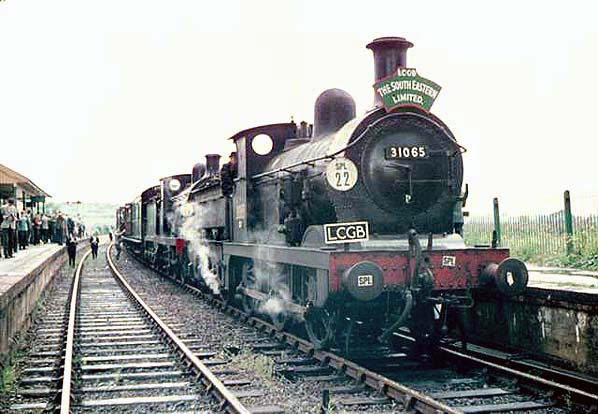
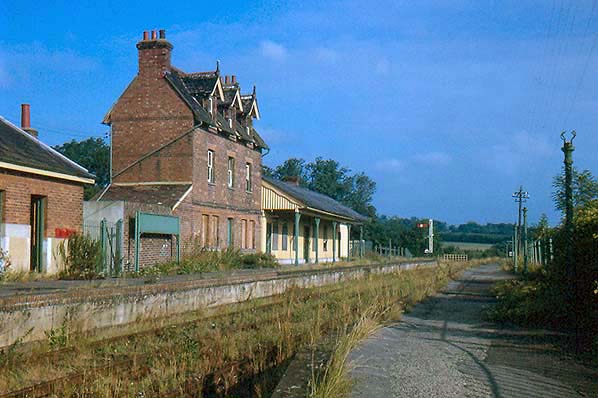
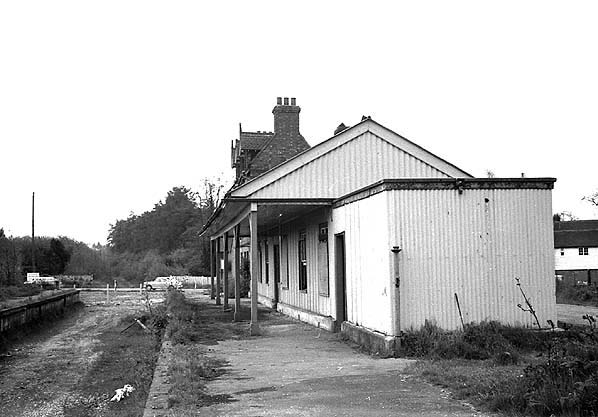
 Home Page
Home Page 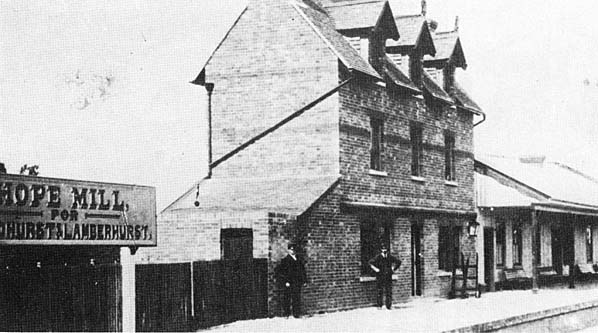
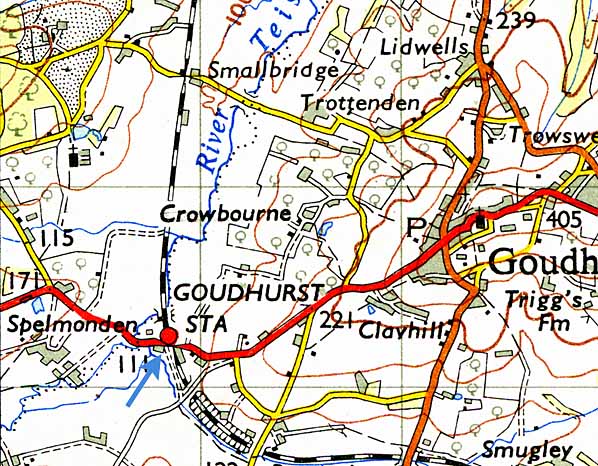
old9.jpg)
10.jpg)
